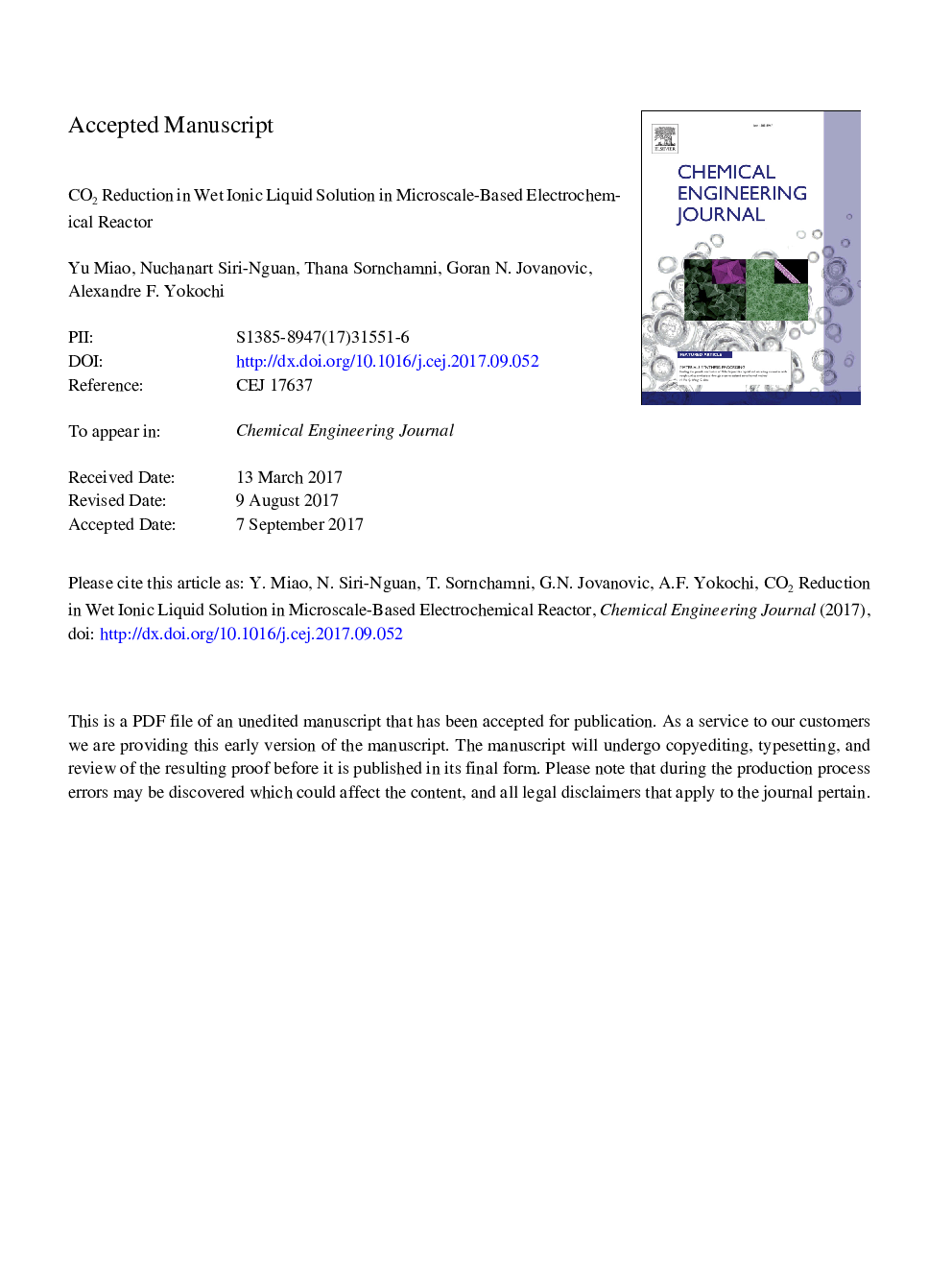| Article ID | Journal | Published Year | Pages | File Type |
|---|---|---|---|---|
| 4762734 | Chemical Engineering Journal | 2018 | 25 Pages |
Abstract
A microscale-based electrochemical reactor was introduced for the reduction of CO2 into CH4, CH3OH, H2, HCOOH and HCHO with the presence of ionic liquid BMIM-BF4 (1-butyl-3-methylimidazolium tetrafluoroborate). Reduction of CO2 was studied under various experimental conditions controlled by factors such as solvent concentration, microreactor height, and mean residence time of fluids in the microreactor. A mathematical model reflecting geometry and flow conditions inside the microreactor was developed to simulate the chemical reaction process. The parameters of the mathematical model were determined using an optimization process in which the best fit between the experimental data and the model prediction was achieved. The model describes the reactions containing substrate reactants (CO2 and H2O) and final products (CH4, CH3OH, H2, HCOOH, and HCHO), which were measured throughout CO2 reduction process experiments.
Related Topics
Physical Sciences and Engineering
Chemical Engineering
Chemical Engineering (General)
Authors
Yu Miao, Nuchanart Siri-Nguan, Thana Sornchamni, Goran N. Jovanovic, Alexandre F. Yokochi,
